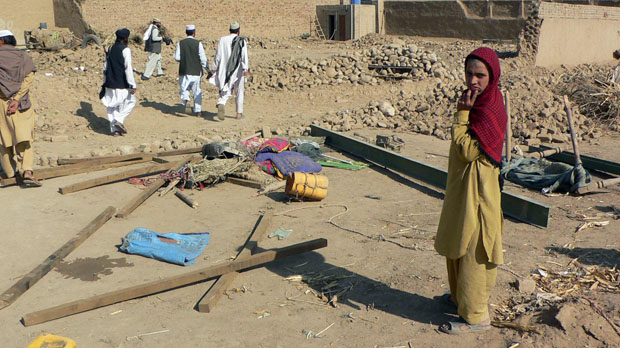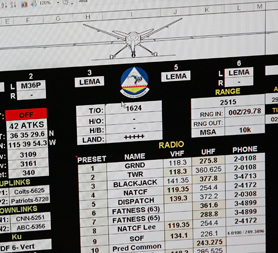‘America’s drones go where its thousands of troops cannot’
Why have drones or unmanned warplanes become so important to America’s war in Afghanistan? Surely it is the realisation that the Obama troop surge there cannot box the Taliban into a corner.

That is because there is no corner, merely the vast and rugged Pakistani border where the Taliban can hide, regroup and continue to provide what one White House official recently called “inspirational leadership” to al-Qaeda sympathisers all over the world.
And so America’s drones go where its thousands of troops cannot. In Afghanistan the drones are openly used. The covert stuff is across the border in Pakistan and especially above North Waziristan. The drones video the militants and fire missiles at them, in a supposedly clandestine war.
Channel 4 News special report and interactive map: Pakistan drone warfare
The US Air Force operates twice as many drones as it did in 2009. The US army trains young recruits who grew up with video games to operate these remotely controlled killing machines, as you can see in Sarah Smith’s excellent report from the army training school in Arizona.
The Pakistani operation is apparently run by the CIA in conjunction with US special forces, occasionally and covertly deployed in small teams on the ground in what has become a “hit and run” counter-insurgency war targeting Taliban and al-Qaeda leaders.
The result of the drones’ work seems to be that militants are finding it harder to travel in large numbers and spend more time in networks of tunnels underground.
Drones supposedly reduce civilian deaths because the weapons they launch are smaller and better targeted than those fired by jets. For years, the Afghan campaign was set back by “collateral damage”, with civilians killed in Nato air strikes. So say hello to “Predator” and its bigger cousin the “Reaper”, drones which not only kill insurgents but supply over 400 hours of video footage a day to troops in Afghanistan. No wonder, if you consider that up to 30 cameras can be attached to a single drone.
Afghanistan: taking on the Taliban – special report
Reports of civilian casualties caused by drones have fuelled domestic controversy in Pakistan. But with its eye on the exit doors from Afghanistan, Washington seems increasingly deaf to Islamabad’s complaints. America is frustrated at Pakistan’s ambivalence on taking on the Taliban – or at least the Pakistani army’s reluctance to push as far into North Waziristan as the Americans would like, so the drones are doing the work instead.

The result of the drones’ work seems to be that militants are finding it harder to travel in large numbers and spend more time in networks of tunnels underground. And a combination of drones, spies, special forces operations and telephone intercepts in theory make it harder to plan a terrorist attack from Pakistan’s tribal areas than it once was.
This does not mean terrorist plots are not being hatched there. Faisal Shahzad, the man charged with trying to bomb Times Square in New York in May 2010, has told the FBI he visited North Waziristan to train with the Taliban. Alleged plots to target European capitals were also allegedly hatched from North Waziristan. But some jihadists are leaving beneath drone-filled skies, or thinking again before risking the journey there in the first place.
The drone doesn’t have all the answers. No single method of warfare does. And the fact that some US commanders are pushing for more covert counterinsurgency ground operations inside Pakistan suggests that too many targets are escaping from the drone threat.
And where are the militants escaping to? Well, the CIA has now begun flying armed drones over Yemen. So America’s war shifts and expands to any “ungoverned space” from which the West could be attacked.
-
Latest news
-
Government considered sacking ex-Post Office boss Vennells in 2014 inquiry hears3m

-
D-Day 80: World falling into ‘same traps’ of tyranny says War Horse author5m

-
Biden tells world to ‘do duty’ and support Ukraine on D-Day anniversary10m

-
Will Labour’s Gaza stance cost it ‘safe seats’ this election?6m

-
‘No information’ to suggest Hamas fighters were in UN school hit by Israel says UNRWA4m

-




